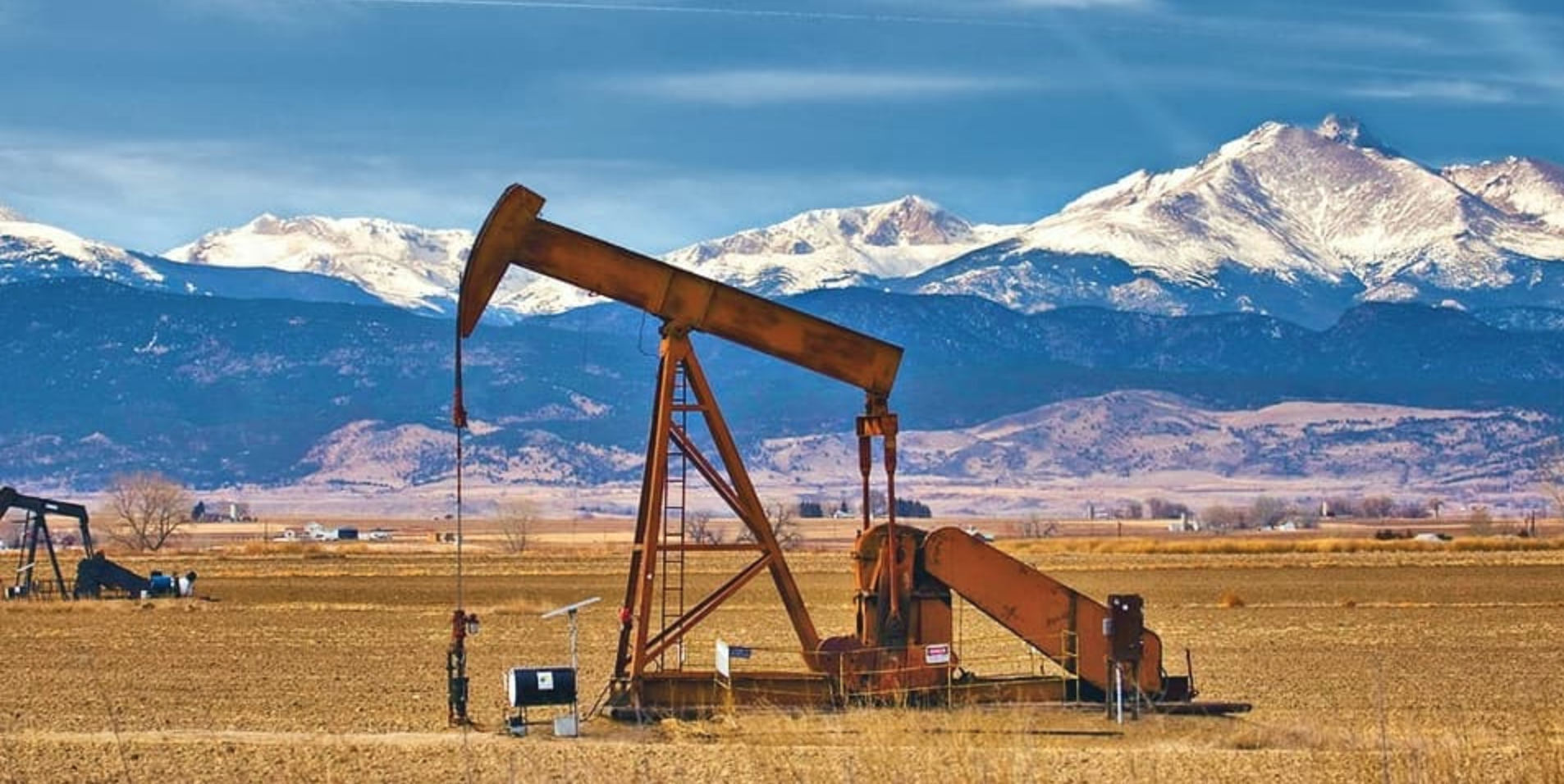The administration resumes oil and gas leasing — and fixes a dysfunctional system in the process.
Analysis by Jonathan Thompson, High Country News
This story was originally published by High Country News on Apr. 27, 2022.
In mid-April, the Biden administration complied with a 2021 court order and restarted the federal oil and gas leasing program, ending a nearly 15-month moratorium. But don’t expect a return to the leasing program of old; instead, as Interior Secretary Deb Haaland emphasized in a statement, it is being rejiggered to be better, stronger and less industry-friendly. When considering which lands to put up for auction, Haaland said, the department plans to consult with tribes and “the best available science.” And royalty rates will be increased by 50%.
Still, the response from climate advocates and keep-it-in-the-ground environmentalists was swift and harsh: President Joe Biden, they declared, had reneged on his campaign pledge to fight climate change and to ban new oil and gas development on public lands. WildEarth Guardians’ Climate and Energy Program Director Jeremy Nichols put it bluntly, saying the administration was guilty of “climate denial” and in “bed with the oil and gas industry.”
That’s one way to view Biden’s move. But it’s not the only one. Put simply, the administration has rescinded a largely ineffectual moratorium that was never intended to be permanent. In so doing, however, it quietly made badly needed repairs to a broken system in a way that — if followed through on — could result in meaningful on-the-ground changes.
In January 2021, just days into his first term, Biden announced that he would halt quarterly oil and gas lease sales “pending completion of a comprehensive review and reconsideration of Federal oil and gas permitting and leasing practices.” In other words, he promised to hold off on issuing new leases while the Interior Department figured out how to reform an obviously dysfunctional system.
Environmentalists applauded the move, some going so far as to say it would keep hundreds of billions of tons of greenhouse gases in the ground. Meanwhile, the oil and gas industry, many oil-state Republicans and a few Democrats, were outraged. New Mexico Oil and Gas Association President Ryan Flynn called the moratorium “a blockade around New Mexico’s economy,” and predicted that “unemployment will rise, state revenue will fall, and our economy will come to a halt.” Both reactions were overblown. Biden never intended to ban oil and gas drilling altogether, and the industry did not collapse.
Here’s what actually happened during the moratorium: The Biden administration continued to issue drilling permits — 3,557 of them, including 1,941 in New Mexico, which churned out record levels of oil, making it the nation’s second-largest producer after Texas; and oil and gas producers generated more than $5 billion in tax revenue, an all-time high, giving the state’s lawmakers a huge budget surplus. (They even gave teachers raises.) There are now 30 more active drilling rigs than when the pause began, along with about 1,500 additional jobs. And methane emissions continued to rise, while burning all those petroleum products spewed billions of tons of carbon into the atmosphere.
In other words, the leasing pause essentially had zero effect on the ground. That’s not because leasing doesn’t matter; it does. A company has to lease the land before it can apply for a drilling permit to actually develop it. But companies already have some 26 million acres of public land under lease, with about half of those acres not in production. That means they could have continued to develop land at a rapid rate for years without acquiring any new leases.
Regardless, the industry and a handful of oil and gas states sued. And last June, a Trump-appointed federal judge ordered the administration to lift the moratorium. In August, it agreed to comply, though it would also appeal, and in November it released a list of parcels for leasing. But before the sales could go forward, a pair of conflicting court rulings on the social cost of carbon metric took leasing off the table, and then put it back on again. (It’s complicated.)
While all of this was playing out, the Interior Department completed its review of the program and, last November, released its findings: The century-old oil and gas leasing system favors industry profit over conservation and multiple use, and it has failed to provide a fair return to U.S. taxpayers. The report recommended raising fees, royalty rates and minimum lease bids to modernize and rebalance the program. Even though the environmental community had been saying similar things for years, the report was widely lambasted for failing to address climate change and for lacking a plan to actually enact the reforms.

But the administration does have a plan, as was made clear when leasing resumed, and that plan does, sort of, address climate change. Originally, 733,000 acres were nominated for this June’s sale, but the Bureau of Land Management will put only 144,000 on the auction block — an 80% reduction, and something Interior is proud of. In Montana, a half-dozen parcels were yanked because they overlapped with pronghorn migratory corridors, while 97% of the Colorado parcels being considered were deferred to protect sage grouse habitat. More than 360,000 nominated acres were withheld in Wyoming, and yet more Western parcels could be taken off the table after the protest period.
This marks a clear departure from the past, when the BLM would auction off nearly every nominated parcel at rock-bottom prices, regardless of protests or tribal consultation. Jade Begay (Diné and Tesuque Pueblo of New Mexico), the NDN Collective Climate Justice Director, tweeted that the reduction in acreage and Haaland’s promise to better incorporate tribal input marked a “huge win for Indigenous Peoples and communities in the West who have been impacted by climate change.”
The minimum bid for the parcels remains at $2 per acre, in defiance of the administration’s own recommendations. Yet if and when the sold leases are drilled, the companies will have to pay 18.75% on the value of the oil and gas, significantly more than the 12.5% that’s been in effect since 1920, when Congress passed the General Mineral Leasing Act.
“I’m glad we finally have an administration that recognizes that the status quo for our oil and gas leasing program is a rip-off for the American people,” Rep. Raul Grijalva, D-Ariz., said in a statement. “If we’re going to let the fossil fuel industry pocket more of our public lands for drilling, we should at least make sure they’re paying a decent price to do it.” The Center for Western Priorities reiterated the sentiment, calling the reforms “good news,” though WildEarth Guardians’ Nichols responded by blasting it: “SHAMEFUL.”
A recent study found that about one-fourth of all of the nation’s greenhouse gas emissions comes from fossil fuels extracted from public lands — as good a reason as any to “keep it in the ground.” Still, it’s not clear whether Biden has the legal authority to ban development outright; so far, even the ineffectual pause failed to stand up in court. The study’s authors recommend adding a “carbon fee” on new leases and implementing other restrictions at the drilling stage to reduce emissions.
Meanwhile, there’s the administration’s new strategy in Utah. In November 2021, the BLM proposed putting more than 6,600 acres across the state on the auction block. But in response to public outcry, it now plans to take bids on just a single, 159-acre parcel. And there’s even a catch: The winning bidder will have to clean up an existing, unplugged well on the site. If nothing else, that marks a clear change in the status quo.
Jonathan Thompson is a contributing editor at High Country News. He is the author of Sagebrush Empire: How a Remote Utah County Became the Battlefront of American Public Lands. Email him at [email protected].




